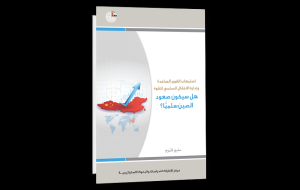The development of the metaverse is a technological evolution that comes as an inevitable extension of the breakthroughs we have already seen in the digital world. Powered by decentralized blockchain technology, three-dimensional worlds will combine the real and virtual, accessed through wearable devices and technology that provides realistic sensory experiences. Encompassing a wide spectrum of human interactions, the metaverse is expected to create significant opportunities, not least of which is the emergence of new patterns of consumption. These shifts will see leading companies and top brands race to provide virtual goods and products for exclusive use within worlds that integrate the physical and digital.
Recent efforts to develop the metaverse have largely been driven by the pandemic, which reinforced the idea of successfully working from home and interacting remotely. Meanwhile, Mark Zuckerberg’s announcement in October 2021 that Facebook would be rebranded as Meta sparked the interest of millions of users worldwide, increasing metaverse-related activity and development. While Silicon Valley firms lead the metaverse race, Chinese companies, among others, are also well-versed in the latest metaverse innovations.
This book explores various issues related to the development of the metaverse, many aspects of which are still uncertain. While Silicon Valley companies promote an idealistic vision of these worlds, others have a more pessimistic view, rooted in deep fears of the many potential risks. One concern is that significant technological vulnerabilities could be transferred and exacerbated in the metaverse, in addition to the risk that the metaverse is exploited militarily, amid the rivalry between major powers. The UAE’s vision for adapting the metaverse, as a tool for entertainment, soft power and prosperity remains the best scenario.
The book explains that in the coming years we will see major transformations in human interaction, through the use of equipment fitted with sensors, some of which has already been developed, including augmented reality glasses, jackets, gloves, helmets, footwear, and other items of clothing. Developing these tools and introducing them to markets at retail prices is a major challenge for companies specializing in this technology.
The metaverse presents a 3D experience that differs from current user interactions; rather than being limited to sight and sound, users are immersed in the experience. This is enabled by the use of smart phones, devices and controllers with sensors, for real-time interactions that allow for countless users to participate simultaneously.
Tech companies around the world are striving to build new and different virtual experiences, bridging the gap between the physical and digital worlds. They aim to create a third space, where people can shape their own virtual lives across various areas of the Internet, allowing them to meet, work, learn and be entertained.
Technology firms, primarily social media companies and video game developers, are building these worlds to create unique spaces with the potential to attract millions of users. Other firms aim to build spaces for the use of companies, organizations, groups or individuals, many of whom would own or lease a virtual space for marketing, retail, gaming or entertainment. Elsewhere, companies are racing to register virtual trademarks, to sell exclusive virtual products, with no physical counterpart, such as digital furniture or clothes.
The book makes the point that as the metaverse develops, governments should focus on research, particularly governments that prioritize digital transformation and keeping pace with the latest advances in communications and public service delivery. Metaverse research will be imperative to understanding the strategic, economic, social, political and ethical dimensions, while addressing the risks and challenges. Other issues to consider include regulating ownership of exclusive virtual spaces, as well as training and mentorship programs that enable employees to keep up with the latest developments. These measures will contribute to transforming the metaverse into a place for a variety of digital interactions, from virtual conferences to remote working; particularly important in health emergencies when there is a need for long-term social distancing.
However, the metaverse brings significant challenges, many of which have persisted throughout the use of the Internet so far. There is also the potential for new patterns of unscrupulous behavior, including new forms of racist and extremist practices, and the possibility of the metaverse becoming a breeding ground for extremist and terrorist groups.
At the same time, the metaverse is an incredible opportunity, if properly regulated, and if the specific requirements of individual users, and of different societies, are taken into account. In this way, the design of worlds could complement end users, societies, organizations, and their specific characteristics. On the other hand, the metaverse could be used by some countries primarily as a tool to strengthen military power, or as an instrument of soft power.
About the Author: Rabea Mohamed Yahya is a translator at the National Media Authority in Egypt. Yahya specializes in Arab and international current affairs, as well as politics, sports, culture and technology. He is also a researcher in Israeli affairs, and a Hebrew translator.
Publisher: The Emirates Center for Strategic Studies and Research
Publication date: 2022













